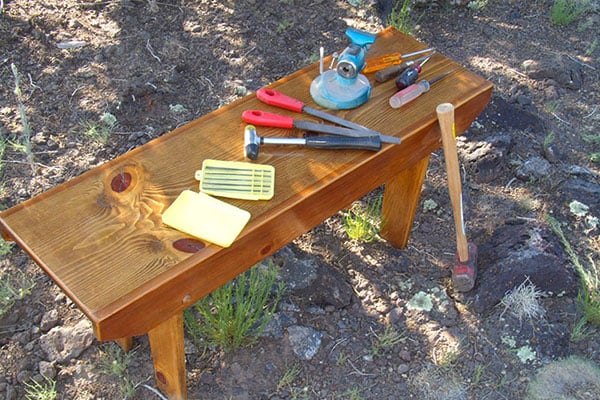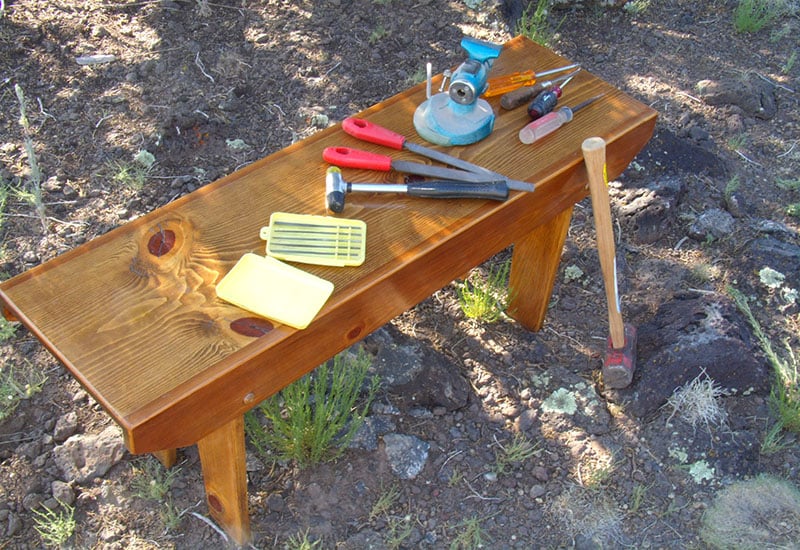
Last Updated on
When it comes to fixing or modifying guns, some of us try it alone, or by watching Youtube videos. I do not fall in that category, as I am well known for being cursed with six thumbs – on each hand! I can shoot all kinds of guns pretty well, but I have learned that it’s really, really hard to replace metal when you have removed too much.
A word about Youtube videos – if you decide to go that route, please do yourself a favor, and watch more than one, from different sources. For example, I can think of 4 different ways to disassemble a M1911, only one of which is preferred by the factories. Another is widely used, and the other two? I can’t manage them, and personally think the guns have been modified to make such a method possible.
The Armorer
For most of us, we see the terms armorer and gunsmith as synonymous – which they are not. An armorer is a factory trained individual who can diagnose why a gun is malfunctioning (in most cases), and can replace the defective parts. With all due respect to those who are, or started as, armorers, they are primarily parts replacers. Sometimes, particularly on older guns, such replacement can require a bit of hand work – fitting the bushing on a 1911, or replacing the thumb safety come to mind.
I am actually trained on a handgun as an armorer by a major maker, BUT – the training mostly consisted of a detailed explanation of the workings of the pistol, and the complete disassembly and reassembly of it – down to every pin and part. Along the way we were taught which parts were most likely involved in which kinds of malfunctions, and how to replace them. As a public service, I do NOT work on this maker’s guns – I like them too much to deface them! But the course did help me better understand how and why they work, which makes me a better instructor.
Some parts needed to be replaced as units, some as pairs (“if you need to replace the frammis, always replace the thingamajig as they work together.”) The instructor informed us that in the standard repair kit, there were 3 strikers, 5 striker springs, but 15 “whatsits,” as they are commonly lost during disassembly. Launched by their spring, they would routinely fly across the room and end up under the largest, least mobile piece of furniture present.
In most cases, a “factory trained armorer” means someone who can diagnose why the gun is malfunctioning, which parts to replace, and replaces them. A worthy calling, to be sure, but somewhat limited.
The U.S. military uses the term Armorer in this sense – as well as what civilians call gunsmiths. I am always amused by military arms collectors who want all matching guns. That is, if it is an M1 rifle made in 1942 by Winchester, they want not just a Winchester trigger, but one with the part number showing it was made in 1942! If you see pictures of WWII armorers, they are usually surrounded by boxes and piles of parts. Their concern was not replacing Winchester parts with Winchester parts, they needed to get functioning rifles into the hands of our troops. If a different make trigger let the rifle fire, off to the front it went!
The Gunsmith
A gunsmith may be an armorer, but he/she is much more. My friends tell me anyone can assemble an AR – which means anyone but me (see the first paragraph). But I learned about guns and shooting at the feet of a true Gunsmith. Sure, he was also a factory trained armorer, by several companies. And he could diagnose problems and switch out defective parts for good ones with the best of them. But he could do much, much more.
His specialty was Mauser rifles, and his collection numbered over 1,200 of them. In addition to what an armorer could do, he could also adjust the parts for smoother functioning, and make parts. When you are dealing with rifles made since 1888, many parts are simply no longer available. And it is not a case of simply filing down a modern part to get it to fit! Designs evolve and classic, valuable rifles have parts that, over the years, wear out, break, and even get lost. My mentor could reproduce almost any part, for almost any gun!
As an example, for a short period of time Mauser made a gracefully curved, aesthetically pleasing scope mount. More rare than hens’ teeth, they were fitted to a limited number of very high end, usually engraved rifles. And these parts had not been made since the 1930’s. A fellow Mauser collector acquired one of these rifles, sadly missing the scope and mount. The mounts were individually fitted to the guns and the scopes, and there were no samples available to copy. The owner had obtained a proper scope, but needed a way to mount it to the rifle!
My gunsmith friend studied the available pictures (no internet in those days), and turned to his lathe and files. It took time, but he managed to produce an exact replica, and fit it both to the rifle and the scope. Several years later, another Mauser collector bought a rifle complete with the scope and mount – when compared, they were identical!
Even with the modular AR series, there are some jobs that call for the skills of a Gunsmith. Usually they result from some part being out of specification, or the desire for a special, non-standard modification. I came to this point when I found that a “previously owned” AR I owned did not have the barrel properly installed. The discovery came when a friend offered to remove the flash suppressor and install a muzzle brake. When he tried to turn off the flash suppressor, the barrel rotated and bent the gas tube into a spiral! Since he makes his living rebuilding helicopters, he had the tools and skills to repair the damage and rebuild my AR!
When you have an idea for a modification that involves more than just changing part A for part A-2, seek out a gunsmith. Look for real training by a gunsmithing school, or word of mouth that he/she has the background and experience to turn your ideas into steel, aluminum, or wood. If you visit their shop, you will most likely see every tool carefully maintained and stored, not just thrown in a drawer. And they usually have a variety of screwdrivers and files, with the files in sleeves, so their delicate surfaces don’t get damaged.
So, what about the Shade Tree?
The shade tree comes from the saying that someone is a “Shade Tree Gunsmith” (or mechanic). He sits under a shade tree in his yard, with a hammer, and anvil, and some old files and screw drivers. To them, every problem with a gun can be filed or pounded into working – sort of. He is perfectly willing to pound on your firearms, and file the parts down until he can hammer them into place.
‘Training? He don’t need no stinking training!”

Of course the shade tree may be metaphorical – I got bamboozled by one who had a shop, complete with a sign and even indoor plumbing! He had some certificates on the wall, and proudly claimed to have been the “gunsmith” for a major police department (I missed the clue here – almost all PD’s employ armorers, not gunsmiths. DUH!) I allowed him to try to repair a Smith & Wesson revolver of mine. Weeks later, I got it back – not just un-repaired, but cosmetically damaged! I compelled him to buy the new part, which I took to a Gunsmith for installation.
Later, I found lots of other folks taken in by this dude. I actually got off easy – one gent had a First Edition Colt Single Action revolver. This shade tree gunsmith had “lightened the trigger pull” – it was light, all right! The owner found that if he cocked the (unloaded) gun, and laid it on the table, in exactly 3 seconds the hammer would fall without any human touching it! The original parts had been case hardened, meaning they had a hard surface but were soft underneath. Mr. Shade Tree had filed through the case hardening to “lighten” the pull, getting into the soft steel underneath. Sadly, replacing these parts to make the gun safe removed about 50% of the guns’ value!
Then there was the guy who used to frequent local gun shows, offering to lighten your revolver trigger while you wait! He would say “leave it to me, go enjoy the show, and come back in an hour.” Then, as soon as you walked away he would remove the side plate, and start cutting and bending springs. Sometimes he would put valve grinding compound in the action, and pull the trigger over & over to smooth it up. When you picked up your gun, the trigger felt great! But when you went to fire it, there were lots of misfires from the too light springs, and sometimes the trigger would not even return to the front position. Just another fraud!
To sum up, armorers certainly have their place! If my “box stock” gun starts to malfunction, I will happily take it to a factory trained armorer. But if I want or need more than simple parts replacement, when it’s modifying that gun to fit my desires, I will seek out a true gunsmith, while looking out for that guy – or gal – sitting under their shade tree!




Leave a Reply